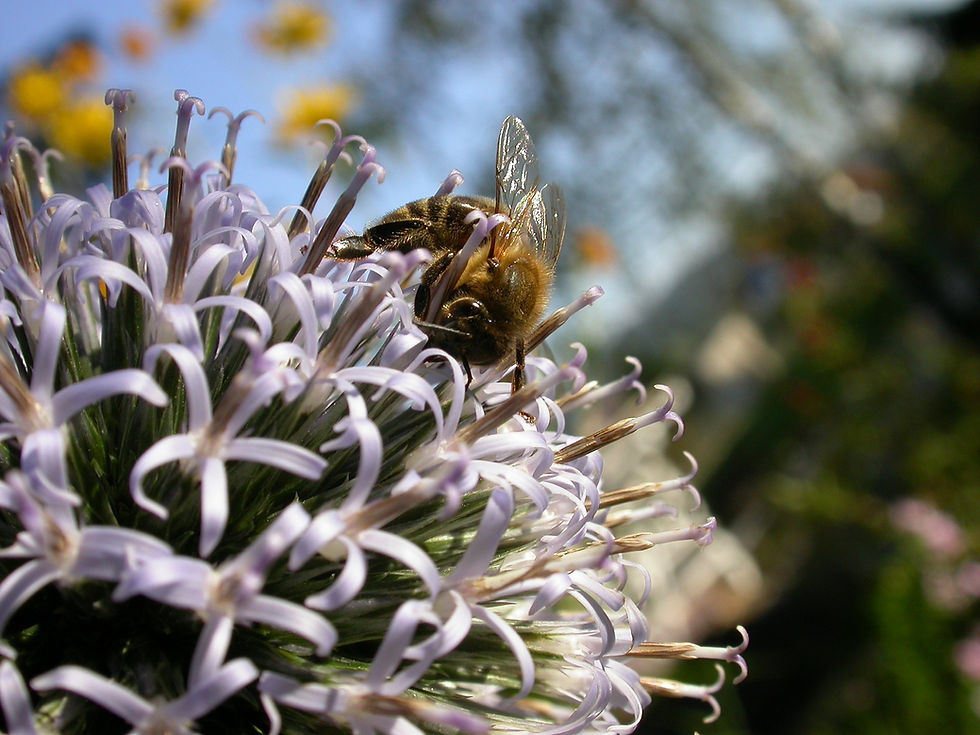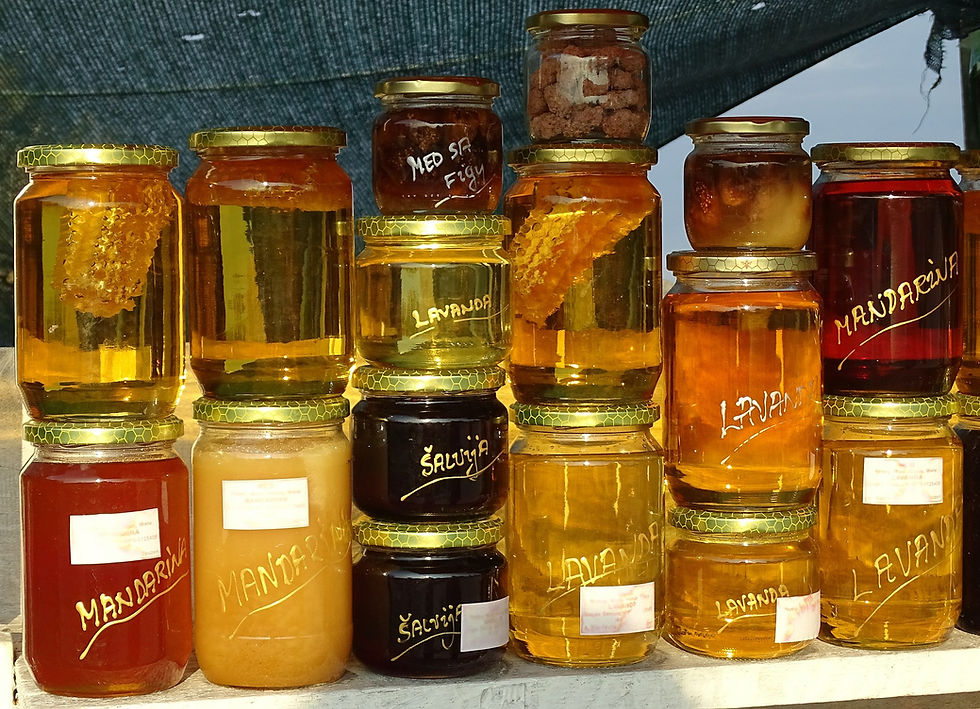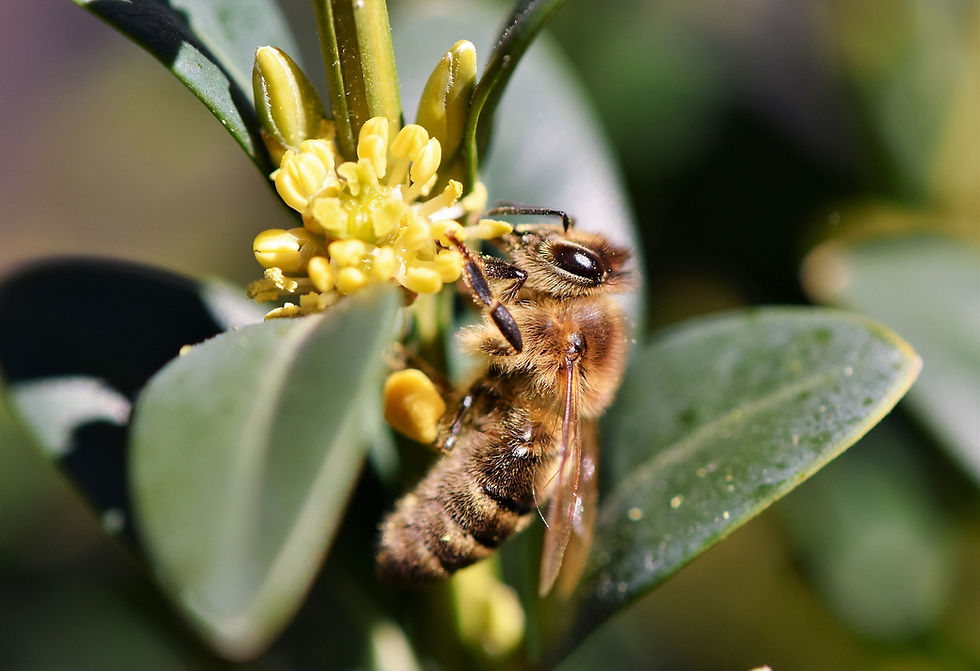Crisis in Beekeeping
- Greca Meloni

- Mar 2
- 4 min read
Saving the bees with a biological halt?

For some months now, the national beekeeping world seems to be facing one of the most significant production crises in recent years. The alarm raised a few weeks ago by Coldiretti has been joined by a report by the Osservatorio Nazionale Miele, which declared a "beekeeping emergency at the start of the 2019 season." Monitoring activities have recorded a progressive decline in average honey production, mainly due to "the severe impact of ongoing climate change, which is making extreme events more intense and frequent, extremely damaging to beekeeping." As noted by the Osservatorio, in many areas of the north, beekeepers have had to continue feeding their bee colonies, and even in central and island regions, flowering has been hindered by bad weather.
Overall, there is talk of a 50% drop in production in the "luckier" areas and a 100% drop in the hardest-hit areas. Social media is abuzz with the topic, and beekeepers are worried because "instead of putting on honey supers, we’re feeding the bees to keep them from starving!"
Although various national magazines and newspapers are helping to raise public awareness about the problem of bee disappearance, it is interesting how much emphasis is placed on the risk that a complete halt in honey harvesting could lead to increased imports from foreign countries, resulting in economic damage for Italian producers.

However, since bees cannot be fed sugar forever and the lack of production is closely tied to their health and the survival of their colonies, it might be more appropriate to reflect on what actions to take to address climate change and prevent the death of these insects. The problem seems too complex to be reduced to a purely economic or "market" issue. Even if it were possible, blocking honey imports from abroad would not solve beekeepers' problems in the long term: bees are starving, and sugar is not a solution.
Beekeepers' perspective

Help to understand better the problems and risks bee populations face comes from their keepers.
One of the things I have learned from the beekeepers who collaborated in my research (not only in Sardinia but also in Austria, France, and Valtellina, where I recently worked) is that for them, the most traumatic event, even before reduced production, is the loss of their bees. Beekeepers establish a deep relationship with their bees, with the environment they share, and with the other living beings they interact with. Those who work with beekeepers learn from them to observe the complex relationships that different organisms establish with each other.
Listening to beekeepers, it becomes clear that the extreme weather conditions seen in recent months are not the only threat to the lives of bees. Poor management of natural resources also makes the survival of these insects precarious. For example, the practice of pollarding, mowing grass, and cutting trees for firewood or biomass during the flowering period, programs that involve the eradication of honey-producing plants considered "non-native" (sometimes replaced with "native" plants but with low honey potential), along with intensive and/or extensive agricultural production systems that rely on pesticide use, are all factors that significantly reduce the availability of food for bees and other pollinating insects.
Bees and plants: a co-evolution
Recent studies have shown that bee populations are closely linked to populations of honey-producing plants in a balanced relationship, where a decline in the population of plants relevant to beekeeping corresponds to a decrease in pollinating insect populations [i]. The more honey-producing plants are cut down, the more bees die. However, the presence of flowers in a territory does not always guarantee a good production season. Recently, the Sardinian beekeepers I work with observed a peculiar phenomenon. In recent seasons, despite flowers in the area, the bees did not visit them and showed little interest in blooms that, under normal conditions, would have been highly nectar-producing. A recent discovery is that flowers respond to the vibrations emitted by the buzzing of bees by significantly increasing nectar secretion, thereby enhancing their chances of being visited by pollinating insects [ii].
If, as is known, the co-evolution between bees and flowers has led the latter to modify their shapes, colors, and scents to make themselves more appealing and attract pollinating insects essential for their survival and the continuation of their species, why have some flowers stopped seeking the attention of bees? Is it possible that this unusual behavior represents a response shaped by a long-term process connected to the ongoing climate change occurring for several decades?
Local beekeeping commissions and "biological halt" to save the bees?
While we cannot answer this question with certainty, we can consider some solutions that might help address the complex issue of the beekeeping crisis.
From the perspective of learning from bees through those who know them best—the beekeepers—we could envision the establishment of local "beekeeping commissions" composed of beekeepers who provide their input on natural resource management projects within municipal or provincial territories and support local authorities in environmental management policies. This way, they would be directly involved in decision-making processes, offering expert knowledge.
We could also consider a sort of "biological halt" in favor of bees, allowing certain plants and flowers to be cut only after the honey harvest period. This would enable bees and plants to complete the biological cycle necessary for the continuity of their species, much like what is done for fish. Furthermore, since the survival of bees is closely tied to the presence of flowers in the area, prohibiting any cutting or mowing activities during the flowering period and the period immediately preceding it would ensure sufficient forage not only for bees but also for other pollinating insects.
Lastly, we could explore ways to incentivize those who own small plots of land, so-called uncultivated lands, to plant honey-producing plant species. This could also create virtuous supply chains with other sectors of primary production, such as pastoralism and agriculture, integrating beekeeping as a fundamental activity for the well-being of the others.
These small measures would foster cooperation between local authorities and on-the-ground operators and could represent a "bottom-up" attempt to take concrete actions against climate change and its effects on the world in which we cohabit with other species.
Greca N. Meloni

[i] M.A. Fishman, L. Hadany, “Floral advertisement and the competition for pollination services” in BioSystems 132–133 (2015) 35–42
[ii] M. Veits et al., “Flowers respond to pollinator sound within minutes by increasing nectar sugar concentration” in bioRxiv (2018) doi: https://doi.org/10.1101/507319



Comments